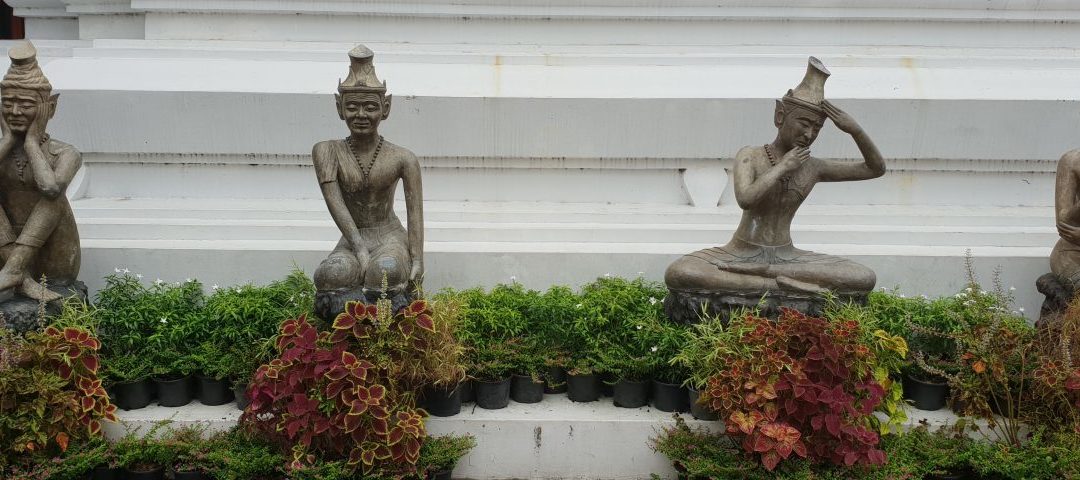The traditional art of Thai self-massage
The meaning of Reusi Dat Ton: Thai self-massage
The meaning of “Reusi” is an ascetic yogi or hermit. “Dat” means to stretch, adjust or train and “Ton” means oneself, so “Reusi Dat Ton” means the Yogi’s self-stretching or self-adjustment exercises. Reusi Dat Ton or the Thai self-massage actually encompasses more than just self-massage but also breathing exercises, dynamic poses, mantras, visualizations, and meditations.
In some ways, it is very similar to the hatha yoga but think of it as a disparate branch of the same Yoga tree. Thai Yoga Massage where a practitioner applies the massage techniques to an individual actually evolved out of the Reusi Dat Ton, Thai self-massage practice.
The techniques used in Reusi Dat Ton
The Thai self-massage element of Reusi Dat Ton uses the same techniques as would be used in a traditional Thai Yoga Massage. Techniques such as rubbing, rolling, beating, palm pressing, compressing and stretching of the skin, tissue and muscle layers of the body.
The application of hot compresses, balms, and liniments onto the skin to deliver healing herbs deep into the layers of the body. Range of motion exercises, vibration, and traction of the joints help to mobilize the joints by increasing the fluidity of the joint and removing stiffness.
The benefits of Thai Self-Massage
And the benefits of Thai self-massage are just as good as having a massage given to you such as increased joint mobility, improved agility and muscle coordination, better circulation, improved respiration, improved digestion and elimination, detoxification, stronger immunity, reduced stress and anxiety, greater relaxation, improved concentration and meditation, pain relief and slowing of degenerative disease.
Best of all you can do it anywhere, at any time and no special equipment is needed.
Reusi Dat Ton Statues at Wat Po Thailand
The revival of Thai Yoga Massage in Thailand
In Thailand in the late 18th century there was a revival in traditional Thai massage when the then King Rama I chose Wat Potharam “Wat Po” in Bangkok to be the site of a new Royal temple, he aimed to preserve ancient medical texts at the temple as well as other traditional arts such as astrology.
King Rama ordered that statues be made showing the Reusi Dat Ton techniques. Over the years successive Thai kings carried on this tradition and the statues have been replaced and repaired. If you visit the temple now there are only a few of the original statues remaining.
Many traditional Thai massage charts also adorn the walls of the temple depicting “wind gates” and “Sen lines” which form part of the Thai massage theory.
Written with thanks to my teacher Natasha de Grunwald for introducing me to Reusi Dat Ton and the books by David Wells and Nephyr Jacobsen for their wealth of information on the subjects of Reusi Dat Ton and traditional Thai Massage.

